SUMMARY
This is AI generated summarization, which may have errors. For context, always refer to the full article.
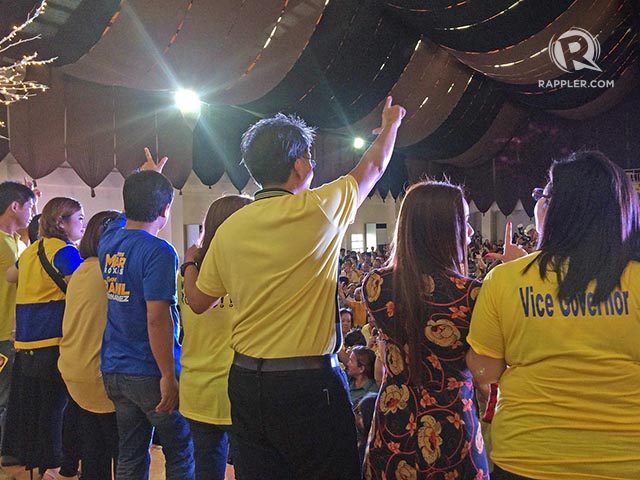
MANILA, Philippines – Of all the presidential contenders, it can be said that Manuel Roxas II, the standard-bearer of the ruling Liberal Party (LP), has the most to prove.
He is the anointed successor of President Benigno Aquino III, and he carries with him the scars of a failed bid for the vice presidency in 2010.
Yet when he announced his candidacy, he had anything but dominant numbers to boast of. At his lowest, Roxas recorded only 4 percentage points in a 2014 presidential preference poll.
Supporters and pundits expected Roxas’ numbers to rise quickly following Aquino’s endorsement in late July. While his numbers did improve immediately after the endorsement, Roxas has seen his numbers either dip or plateau months after.
According to the Social Weather Stations (SWS), Roxas was 2nd in the “top-of-mind” polls held after Aquino’s endorsement and in a virtual three-way tie in another version of its presidential preference poll.
Pulse Asia placed Roxas at second in September, next to Senator Grace Poe, who he initially wooed to be his running mate.
But the tale of the tape changed in December 2015, during polling firms’ 4th quarter preferential survey, the last that would be taken before the official campaign season kicks off in February.
SWS’s survey saw Roxas rise a meager 2% while the Pulse Asia survey, taken a week after the SWS poll, saw a 3 percentage point dip for Roxas. (READ: Roxas suffers first survey dip post-endorsement)
| MAR ROXAS’ PREFERENCE POLL NUMBERS | |||
| Pulse Asia | SWS | Laylo Research Strategies | |
| September 2015 | 20% | 20% | – |
| December 2015 | 17% | 22% | 22% |
It was a far cry from the lofty pronouncements of his supporters months prior. Is it a case of a calculated slow-and-steady rise or is the Aquino magic simply not enough?
Rappler traces the places Roxas went and the activities he took part in between September to December 2015 to make sense of his survey numbers, using Pulse Asia’s September and December surveys as points of comparison, while taking note too of data from SWS and Laylo Research Strategies.
NATIONAL CAPITAL REGION
The National Capital Region (NCR) is traditionally an opposition bailiwick, a pattern that members of the LP emphasize when the breakdown of voter’s preference is discussed.
Roxas has performed consistently low in the vote-rich mega city.
| MAR ROXAS’ PREFERENCE POLL NUMBERS IN METRO MANILA | ||
| September 2015 | December 2015 | |
| Pulse Asia | 11% | 11% |
| Laylo | – | 8% |
But being the center of many nationwide groups and the hub for national media, Metro Manila was still witness to a huge chunk of Roxas’ activities and engagements.
Between October to December 2015, the LP standard-bearer attended at least 6 presidential fora, either with students, the business community, or civic society. Most of these fora included a Q&A format where a moderator, a panel or audience members were given a chance to ask him questions.
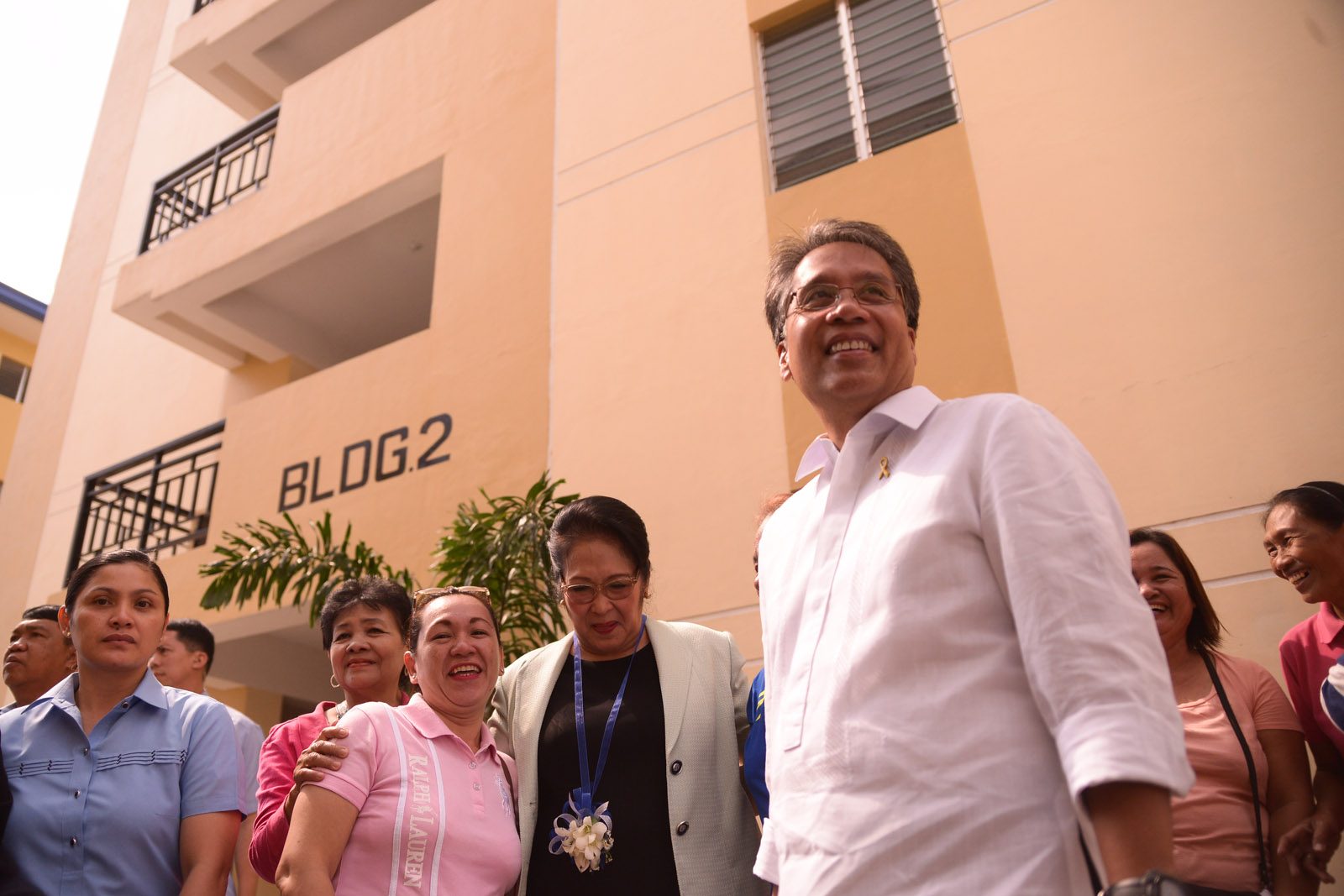
Roxas attended the Philippine Chamber of Commerce and Industry (PCCI) forum alongside Vice President Jejomar Binay and Senator Miriam Defensor-Santiago on October 27. Barely a week later, he was in the hot seat during Go Negosyo’s forum for presidential aspirants on December 9.
Before November ended, Roxas again faced the business community during a forum organized by alumni from 3 prominent US business schools. He also attended two forums back-to-back on December 10 and 11 – CNN Philippines’ Town Hall at the Far Eastern University and the Galing Pook forum at the Ateneo de Manila University.
Of the presidential forums attended by Roxas, only one was held outside Metro Manila – a dialogue with students and civic society leaders at the University of San Jose Recoletos in Cebu City on November 12.
In Metro Manila too, Roxas made it a habit to attend the conventions of national groups – from leagues of barangay officials to government employees.
When he was still interior secretary, he attended the gathering of Mindanao barangay officials in Pasay City on September 2. And when the same league held its national convention on September 29, Roxas was again its guest of honor even if he had long stepped down from the Cabinet.
Between the months of September and December, Roxas led or joined countless meetings and events in Metro Manila, including the announcement of Camarines Sur Representative Leni Robredo as his running mate, the launch of the ruling coalition’s Senate slate, and meetings with other political parties in hopes of keeping the coalition intact in 2016.
Metro Manila didn’t go for Roxas during his failed 2010 vice presidential bid. The LP candidate then got only 1.48 of 4.2 million votes in the mega city, compared to Binay’s 2.1 million votes.
BALANCE LUZON
Seven of 10 provinces considered vote-rich in the Philippines all belong to Luzon. Of the 7, only one – Pangasinan – picked Roxas over Binay in the 2010 vice presidential race.
The same provinces voted in favor of the LP coalition’s senatorial bets during the 2013 elections.
It’s no surprise, then, that Roxas also spent a lot of time in different Luzon provinces, visiting them more than twice in the 4-month period spanning the two different surveys.
| MAR ROXAS’ PREFERENCE POLL NUMBERS IN LUZON | ||
| September 2015 | December 2015 | |
| Pulse Asia | 18% | 16% |
| Laylo | ||
| Northern/Central Luzon | – | 18% |
| Southern Luzon/Bicol | – | 16% |
Roxas has visited Laguna at least 3 times in the latter quarter of 2015. It was during one visit on October 1 when the “Playgirls” scandal involving former Metropolitan Manila Development Authority Chairman Francis Tolentino happened.
Tolentino was presumed to have been assured of a slot in the LP-led senate slate but the backlash following the racy dance number in Laguna forced him to leave the slate. Roxas and the rest of the LP also had to deal with the criticism following that incident.
It is also in Laguna where the LP has forged a province-wide coalition with the Nacionalista Party, which counts the incumbent governor Ramil Hernandez as its member.
On December 8, Roxas visited 3 Laguna cities – Santa Rosa, Biñan and San Pedro – in a show of force for the LP standard-bearer. (READ: Ruling party in Laguna: One stage, two vice governors)
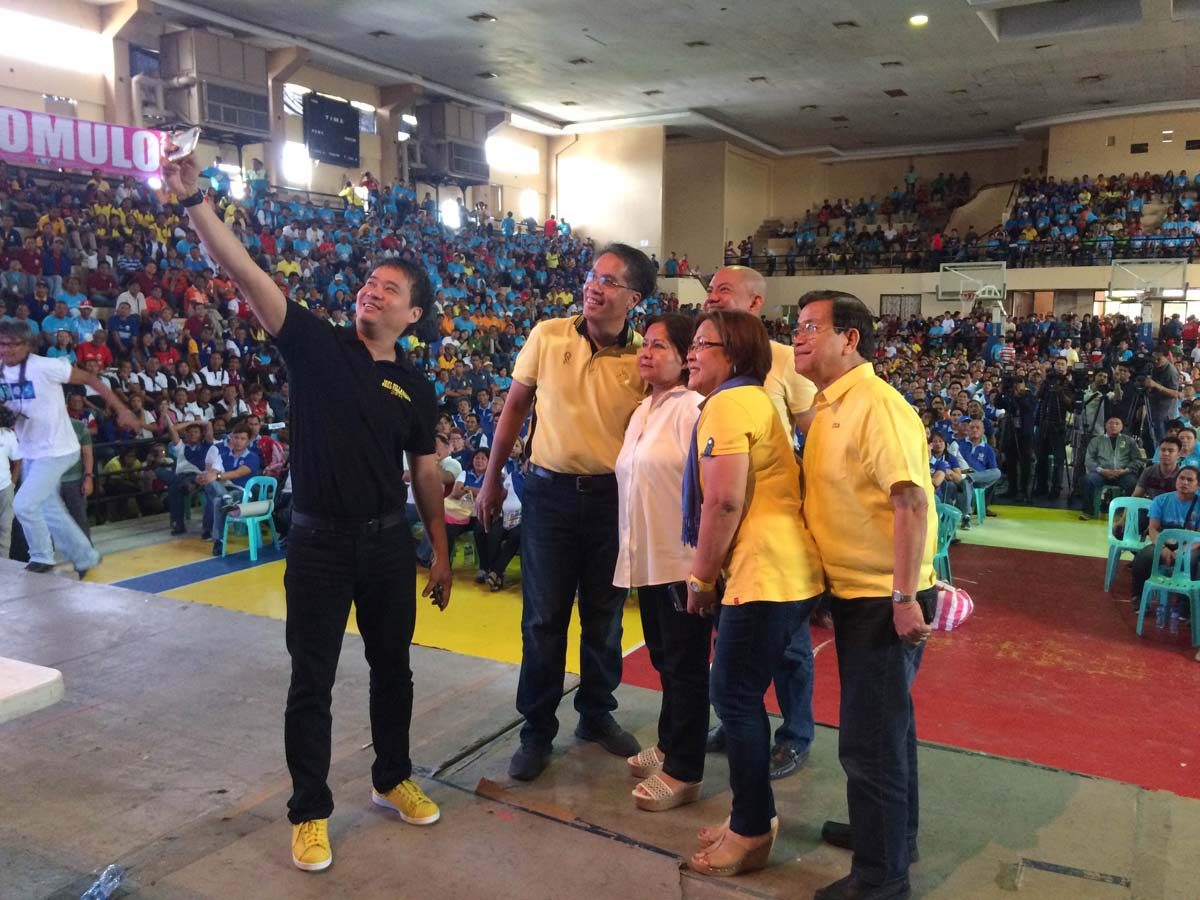
The province is considered a stronghold of the opposition, where ousted governor ER Ejercito (nephew of ousted president turned Manila mayor Erap Estrada) still enjoys a strong following. Roxas also lost badly in Laguna when he ran for vice president, getting only 328,130 votes compared to Binay’s 560,978.
Roxas has also frequented Bulacan, Batangas and Nueva Ecija several times the past 4 months.
Bicol has also been a fairly frequent destination for Roxas. He visited Sorsogon, the home province of Senator Francis Escudero, the running mate of presidential rival Senator Grace Poe, at least once the past 4 months.
One of his more notable visits happened the day after Escudero announced his candidacy and a few days after Poe announced her own. (READ: In Sorsogon, it’s Mar-Chiz in 2016)
One of Roxas’ most gruelling periods between September and December 2015 saw him visit 5 Luzon provinces – Pangasinan, Isabela, Albay, Camarines Sur, and Batangas – in a span of 4 days.
Those visits included radio interviews, multi-sectoral assemblies and events with local LP members or allies.
The only vote-rich province which Roxas did not visit repeatedly was Cavite, whose incumbents are allied with Binay. The Vice President got more than half of votes in Cavite back in 2010, with Roxas garnering around 35%.
VISAYAS
The Bisaya and Hiligaynon-speaking parts of the country have always been kind to Roxas, according to data from past elections. The Visayas is considered the LP standard-bearer’s bailiwick.
He does, after all, trace his roots to two Visayas provinces – Negros Occidental on his mother’s side and Capiz on his father’s side.
Vote-rich Cebu, for instance, delivered strongly for Roxas in 2010, where he got over 61% of votes compared to Binay’s paltry 24%. The LP standard-bearer also did very well in Negros Occidental, getting over 66% of votes in the province compared to Binay’s 20%.
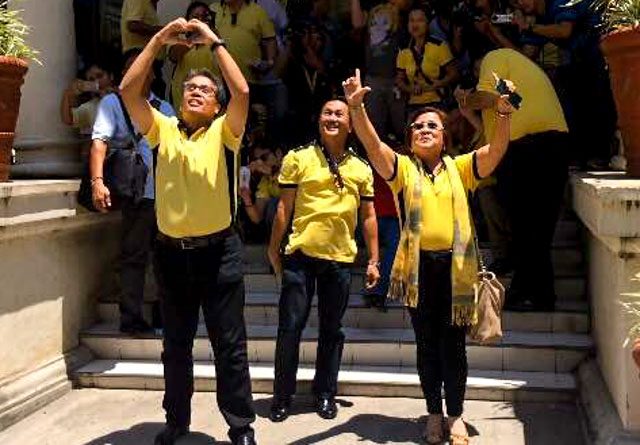
Presidential preference poll numbers tell more or less the same story of Visayas as Roxas’ bailiwick. (READ: Roxas warns vs ‘malubak na nakaraan’ and ‘untested’ bets)
| MAR ROXAS’ PREFERENCE POLL NUMBERS IN VISAYAS | ||
| September 2015 | December 2015 | |
| Pulse Asia | 34% | 27% |
| Laylo | – | 32% |
But Pulse Asia’s breakdown of voters’ preference came as a surprise to many. Surveys commissioned by media entities and internal polls by the LP have all established that Roxas has at least 30% preference in Visayas.
Although he hasn’t frequented Visayas provinces as he has those in Luzon, Roxas visited different cities and towns in Cebu province several times, with a couple of visits to Iloilo and stops in Dumaguete, Eastern Samar, and Leyte.
Why did he drop in the Visayas – by over 7 percentage points – between September and December 2015?
Two things could be factors: the anniversary of Super Typhoon Yolanda (Haiyan), which ravaged Eastern Visayas, and the entry of Davao Mayor Rodrigo Duterte, who also hails from Visayas.
On November 8, 2015, members of the opposition flocked to Tacloban City in Leyte, which suffered the most casualties and damage during the onslaught of Yolanda. Tacloban is also where politics allegedly got in the way between national and local government’s response. (READ: Politics, lack of command hound Tacloban)
To this day, Roxas’ detractors point to a meeting between him and Tacloban City Mayor Alfred Romualdez as a supposed reason why he shouldn’t be elected president.
Both Aquino and Roxas skipped visits to Eastern Visayas on Yolanda’s 2nd anniversary, although both of them did visit Arteche, Eastern Samar, on October 30, or more than a week before the anniversary.
Roxas has been to Leyte, even Tacloban City, at least once in the past, to guest in local radio shows.
MINDANAO
This is where the survey numbers differ vastly for Roxas, at least based on Pulse Asia and Laylo data (SWS does not release a breakdown of voters’ preference according to island groupings).
| MAR ROXAS’ PREFERENCE POLL NUMBERS IN MINDANAO | ||
| September 2015 | December 2015 | |
| Pulse Asia | 15% | 13% |
| Laylo | – | 26% |
According to the Laylo survey, Roxas is second to Duterte in Mindanao. Pulse Asia, meanwhile, places him at a distant 3rd behind Duterte and Binay.
Roxas frequented Mindanao the least from September to December 2015, but visited key provinces including Davao del Sur, Misamis Oriental, and Misamis Occidental.
The “Daang Matuwid” standard-bearer kicked off September with a “Gathering of Friends” in Davao City – essentially, a political sortie to rally support for Roxas. No less than President Aquino graced the September 9 event. (READ: Roxas’ pitch to Mindanao: Aquino admin valued you the most)
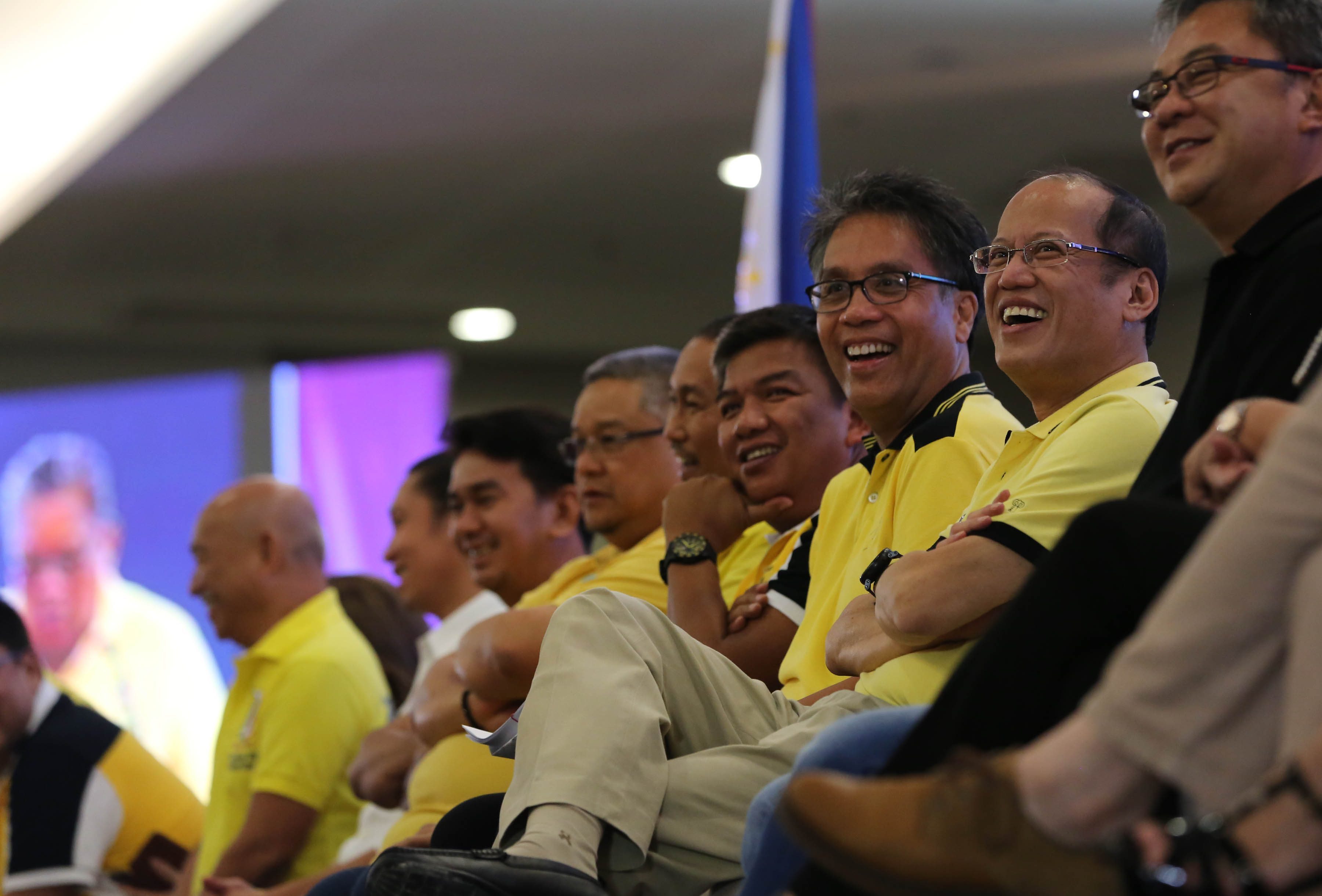
More than a month later, Roxas and Robredo visited Koronadal City on October 18, as guests of honor for a Department of Social Welfare and Development Pantawid Pamilyang Pilipino Program (4Ps), the Aquino administration’s flagship poverty alleviation program.
Testimonies from 4Ps beneficiaries are staples in Roxas’ sorties in Mindanao and around the Philippines, supposed proof that Aquino’s “Daang Matuwid (Straight Path)” and its programs are working.
Roxas also paid a quick visit to Loreto town in Agusan del Sur on October 24 to attend the wake of its slain mayor, Dario Otaza. The rest of his visits to Mindanao consisted of radio guestings, multi-sectoral assemblies, and quick photo-ops with locals.
But predicted voting patterns in Mindanao changed abruptly late November when Duterte finally decided he would run for president.
Several Mindanao politicians, even those affiliated with the ruling LP, were supposedly jumping ship to support the Davao mayor, the sole Mindanaoan in the presidential race. Roxas downplayed reports of jumping ship but said he “understood” the decisions of politicians who do.
It did not help that Duterte was convinced that it was Roxas, his erstwhile friend, was behind rumors he had cancer. Even if Roxas denied his and his party’s involvement, their “feud” hit a new low mid-December after Roxas said it was a “myth” that Davao was the country’s safest city.
Duterte hit back by criticizing Roxas’ ability as a manager, citing the experience of Yolanda and even claimed Roxas was lying about his Wharton degree. The word war soon spiralled into slap dares, fist fight challenges, and even a gun duel challenge.
In the middle of the media spectacle, LP members from Mindanao met with Roxas in Quezon City to assure him of their support while conceding Duterte’s impact on the LP standard-bearer’s candidacy. (READ: Mar or Rody? Mindanao is not hungry for entertainment, say LP allies)
The issue eventually died down as Christmas drew nearer, but not before other political camps weighed in and criticized Roxas and Duterte for their tirades.
AQUINO’S NUMBERS
Unlike his rivals for the presidency, Roxas’ numbers may be influenced by the approval rating of President Aquino.
The Laylo survey found out that the top reason why people picked Roxas was because they hoped he would be able to continue Aquino’s programs. At the same time, respondents said they would not vote for Roxas because he “does not make his own decisions and merely follows what Aquino says.”
From September to December 2015, Aquino and his administration faced several issues. Towards the end of August, the influential Iglesia Ni Cristo (INC) staged a massive protest along EDSA, supposedly because of the government’s overreach into their internal matters.
The administration would later triumph and convince INC leaders to stop the protest. Months later, the case against the church’s top ministers remains in limbo.
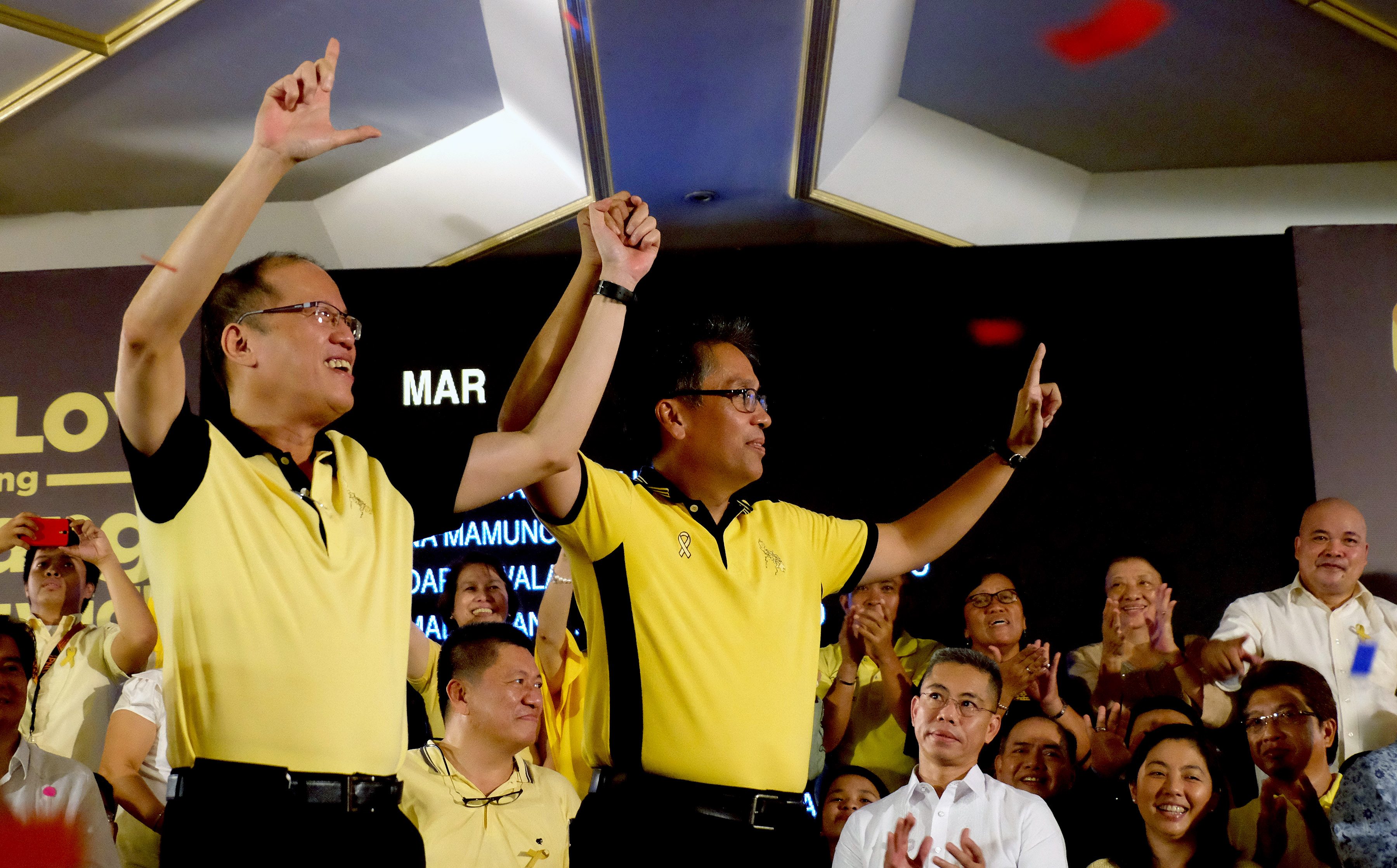
In September 2015, the controversial “Oplan Exodus” again made headlines after Aquino himself said that there were still unresolved issues. Exodus was a top-secret police operation that killed a top terrorist but cost the lives of 44 elite cops in the town of Mamasapano in Maguindanao province. (READ: President Aquino and the ghosts of Mamasapano)
Aquino was criticized heavily for his perceived lack of empathy for the dead, his role in the operation, and for allowing his friend, suspended PNP chief Alan Purisima, to play a part in the high-stakes operation.
In contrast, Roxas, then interior secretary, was left in the dark and only found out about the operation when the body count rose.
The President saw his numbers dip the lowest in the aftermath of Exodus.
Another hot issue against Aquino and his administration was the so-called “laglag-bala scam” at the Ninoy Aquino International Airport (NAIA), wherein airport authorities supposed connived to plant bullets in unwitting passengers.
During the survey period, Roxas and the LP was also accused of being behind disqualification cases against Poe, who before December led all presidential preference surveys. – with research by Michael Bueza, Reynaldo Santos, and Wayne Manuel/Rappler.com
RELATED LINKS:
On Duterte’s trail: Where did he go? Wha did he do?
On Grace Poe’s trail: Where did she go? What did she do?
On Binay’s trail: Where did he go? What did he go?
Add a comment
How does this make you feel?

There are no comments yet. Add your comment to start the conversation.